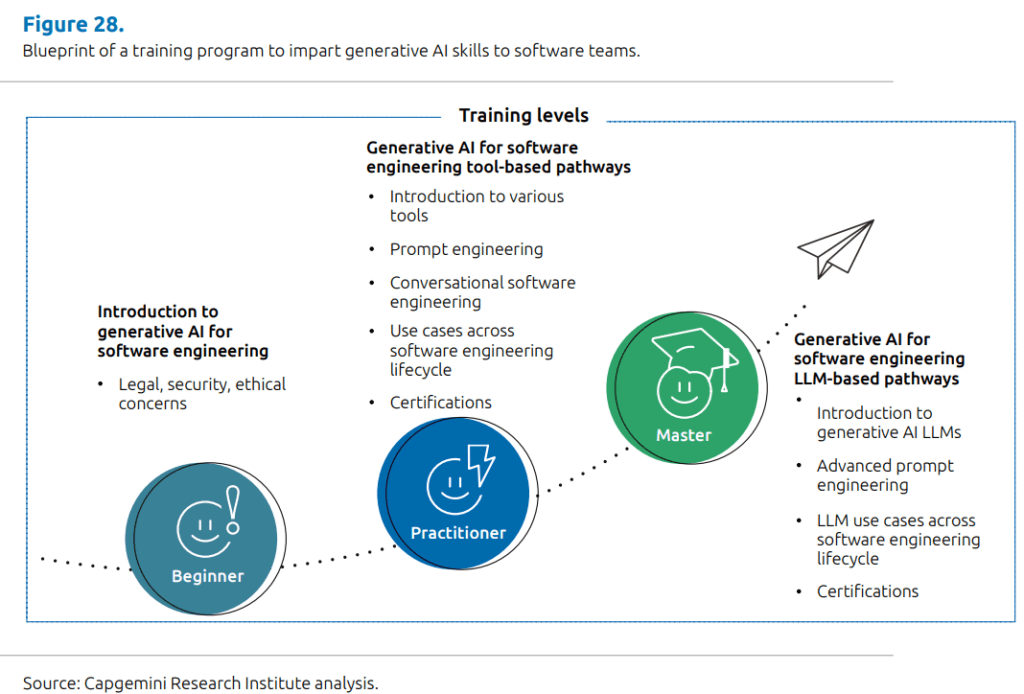AI isn’t just the next big thing; it’s here now, and whoever isn’t using it is missing out.
Our clients often ask about AI tools in our development process, but finding a truly
valuable approach hasn’t been simple. Here’s how my team and I integrated AI into
quality assurance and what we learned along the way.
How we got the request to start investigations
Amid all the AI hype, our QA team at NIX received a question from sales: “What AI tools
are you using? Clients are asking.” As we discussed this further, it became clear that if
done right, introducing AI could mean increased productivity, time and cost savings, and
added quality gates in our process—all benefits we wanted.
Categorizing AI Tools
After researching AI for QA, we divided modern tools into three categories:
- Existing tools with AI features added on the hype wave: These ranged
from adequate to great, but most added AI as a gimmick because “everyone
wants AI.” The genuinely useful AI features were minimal—like generating user
avatars or spell-checking test cases. However, these tools were often too costly
for the benefits they provided. - New AI-based products: These tools aimed to be “intelligent” but lacked polish.
User interfaces were clunky, bugs abounded outside the “happy path,” and some
ideas didn’t work as intended. Still, they showed hints of what we imagined for
QA’s future—maybe in three to five years. - False advertising: Some tools promise to test entire applications and eliminate
all bugs in complex systems. These were clearly cash grabs, yet their sheer
number was surprising.
What actually works?
Despite the hype, a few genuinely good features emerged. Some tools auto-generated
tests for real applications and documented test cases, while others created test cases
from feature descriptions or fixed broken auto tests. Other tools made testing
recommendations based on existing test cases. But not all of these tools were ready for
commercial-scale projects. Some lacked the full feature set, others demanded too much
access (a security risk), and many couldn’t handle scaling.
Summary of our findings
In our evaluation, none of the AI-based tools met all our requirements for commercial
use on large projects. Either they weren’t complete, had significant security risks, or
didn’t scale well. So, while AI in testing holds potential, current tools didn’t meet our
standards.
Exploring known AI tools
From the outset, we excluded major tools like ChatGPT, Google’s Gemini, and GitHub
Copilot because we already used them in various ways. But after realizing there were
few viable AI tools, we turned to these options to see how we could use them more
systematically in QA.
Understanding Real Use Cases
Our first step was to survey our QA engineers—about 400 in total—on how they were
already using AI. Roughly half were using AI for:
● Test Automation Assistance: Speeding up test writing and debugging.
● Brainstorming: Generating ideas, including test cases.
● Data Generation: Creating test data for varied scenarios.
● Proofreading: Checking emails and documentation.
● Routine Automation: Automating repetitive QA tasks.
With these insights, we designed an in-house course for our QA team on using
generative AI effectively, covering essential skills and tools that could benefit our clients.
The overall contents of our course look like this:

And now as engineers all across the company are learning – they also are starting to
come up with more new use cases and optimizations to the existing ones.
How profitable is it?
The impact has been positive. Mid- to senior-level manual engineers now spend about
20% less time on test generation and documentation. AI also lets us quickly generate
multiple test frameworks to see which works best, something that used to take days. AI
enables solo engineers to receive code reviews, adding value to smaller teams.
The downside
AI isn’t flawless—it’s a helpful assistant but needs double-checking. For junior
engineers, AI can be tricky, as they may struggle to recognize when AI makes mistakes.
Just like a human assistant, AI can enhance an experienced engineer’s productivity but
doesn’t replace expertise.
Why companies get it wrong
Many companies still misunderstand AI. Tempted by exaggerated claims, they try to
incorporate AI tools that don’t deliver as promised, resulting in frustration and poor
outcomes.
Our experience led to a few important takeaways:
- AI isn’t a miracle worker: It won’t double or triple productivity overnight, but it
can create steady gains as people grow familiar with it. - Tailored implementation is crucial: For AI to be useful, it needs to be adapted
to the specific needs of the company. Following the hype isn’t enough. - AI doesn’t empower juniors to work like seniors: It’s useful for experienced
engineers but can overwhelm juniors, who may struggle to distinguish between
AI’s helpful and erroneous outputs. - Purpose-built AI tools for QA aren’t ready yet: While there are promising
tools, they don’t yet add as much value as hoped compared to traditional non-AI
tools for similar purposes.
AI continues to evolve, and while it’s changing some workflows, quality assurance
remains a complex process requiring human oversight. For now, AI serves as an
assistant rather than a replacement, but as it matures, we’re optimistic about its
potential.
About the author
I’m Serhii Mohylevskyi, QA Practice Leader at NIX, and for over a decade, I’ve worked
across manual, automated, and performance testing. My role includes identifying tech
shifts and upgrading our QA standards, which impact hundreds of projects across the
company.

